There are four articles in this series on different strategies for cold-weather chicken care. This article explores how to prevent and treat frostbite in chickens. To read the others, click on the links below:
- “Cold-Weather Chicken Care: 11 Quick Ideas to Improve Chicken Comfort”
- “The 13 Best Chicken Breeds for Cold Climates”
- “How to Keep Chicken Water From Freezing”
___________________________
Frostbite isn’t normally something I worry about in my holler here in Surry County, North Carolina. However, this past winter, with record-breaking cold temperatures lasting for weeks at a time, I learned a few lessons about how to prevent and treat frostbite in chickens.
It all started when Rasputin, my rebel rooster, refused to use good sense and get out of the cold. As our temperatures dropped into the single digits and 40 mph wind gusts sent the rest of the flock running for shelter, Rasputin planted his feet firmly—in a few inches of frozen-over snow—and held his ground.
I don’t know if it was the wind that made him crazy, or if the idea of being stuck in a coop with 22 unhappy hens kept him from the coop. But, even as his comb began to swell, then turned white at the tips, and his feet flushed red … he stood tall.
Now, Rasputin happens to love being held and cuddled. So I repeatedly picked him up, gave him a warming snuggle and took him to one of our many straw-laden sheltered areas. Yet each time I went back out to deliver warm water to my flock, I would find him out in the cold. Again.
So, here’s lesson No. 1 in how to prevent frostbite in chickens:
Lesson 1: If your chickens don’t have the good sense to get out of the cold (and stay there), lock them up!
Our coops keep predators out, but they can also be used to keep chickens in. They might not like it. But for their own safety, don’t hesitate to keep your chickens in the coop during extreme cold.
Now, I have to confess, I wasn’t really thinking about the frostbite when I carried Rasputin back to the coop. I was concerned about how much feed he would eat if he burned all his calories out in the cold. He’s a big rooster, with a big appetite, and I like to keep my feed costs low. Also, I had a few other hens out in the yard—namely my Buckeyes and my Salmon Faverolles—showing no signs of cold whatsoever.
It was only later, when I noticed that some white spots on Rasputin’s comb started fading to black and shriveling up, that I realized what had happened. Now, Rasputin is descended from a rescued fighting rooster, so he is very heavy and tall and has a few circulatory problems. His comb is more susceptible to episodes of ringworm than the combs of my other chickens. So, even though the timing was odd, I thought those white spots were just a little ringworm recurrence.
Discovering that I’d missed the early signs of frostbite in my big boy helped teach me these next two lessons:
Lesson 2: Comb size matters. Pay extra attention to your roosters with large combs and wattles and to any chickens with standard combs.
My cold-hardy breeds like the Buckeyes and the Salmon Favorelles have small combs that sit tight on their heads. In cold weather, your chicken’s body will preserve heat by cutting blood flow to the comb. This puts chickens with larger combs at greater risk because large combs are more exposed to the elements.
Many people who keep chickens in cold climates swear by slathering petroleum jelly on larger combs and wattles to help prevent frostbite, and some talk about lanolin as a more eco-friendly alternative. Keep in mind that humidity, even more than cold, is a factor in causing frostbite, so make sure you have proper ventilation (but no drafts) in your coop to keep the humidity level as low as possible.
Now, even cold-hardy breeds, with cold-suited combs, can be subject to frostbite on their feet. Which brings me to my next lesson:
Lesson 3: Know how to identify the early signs of frostbite and take action sooner rather than later.
Early frostbite looks a whole lot like a minor case of ringworm. Patches of pale white appear on the affected areas on the comb and wattles. As the frostbite continues, the areas start to darken and spread. If the area becomes solid black, it then begins to dehydrate and look a bit like crispy bacon (though not nearly as appetizing).
On the feet, frostbite shows up as splotches of red. They tend to be most prominent between the toes, but the splotches also show up on the legs. Some cases may result in swelling and blistering.
Severe frostbite can also impact behavior. Frostbitten chickens can become lethargic and disinterested in normal activity, and can lose their appetites.
Once you know what to look for, then you need to be prepared to act if necessary.
Treating Early Frostbite
If you see the early signs of frostbite while they are happening, take your chicken to a warm place and slowly bring affected areas up to temperature. For example, have your chicken stand in a warm foot bath (around 100ºF) and gently press a warm wash cloth around the comb area. Do not rub either of these areas as that will likely be painful for your chicken.
Once your chicken is sufficiently warm, give them time to dry before returning them to their coop.
Treating More Severe Frostbite
If your chicken is showing signs of lethargy and loss of appetite as a result of frostbite, this is likely a more serious case. Keep your chicken confined to a warm area and monitor their affected areas and behavior for a couple of days before returning them to their coop.
If they develop more severe symptoms like blistering or continued loss of appetite, infection may be a concern. At that point you will want to refer to your chicken health manual for details on how to treat infection and when to enlist the help of a veterinarian.
The one I use and recommend is The Chicken Health Handbook by Gail Damerow.
What Happens After a Chicken Suffers Frostbite?
In Rasputin’s case, he recovered quite quickly from his frostbite. He never faced infection and always had his appetite. However, the most affected areas on his comb are in the process of sloughing off as the damaged skin dries and withers. A little while from now, he may lose some of the tips of his once-stately rooster comb. He probably won’t notice this loss most of the time. However, in hot weather, his reduced comb area may impact his ability to cool himself quickly. So, I’ll need to give him a little more attention in hot weather now, too.
In case impending cold weather has made you consider cold-hardy breeds for your coop, check out the next article in our Cold-Weather Chicken Care series, which highlights 13 cold-hardy breeds to consider for your spring purchase.
Or, for emergency cold-weather care ideas, check out our article on improving chicken comfort in winter.
How do you prevent frostbite in your flock? How do you treat it if it happens? Let us know in the comments below!
_________________________
The Grow Network is a participant in the Amazon Services LLC Associates Program, an affiliate program designed to provide a means for our team to earn fees for recommending our favorite products! We may earn a small commission, at no additional cost to you, should you purchase an item after clicking one of our links. Thanks for supporting TGN!
_________________________
(This is an updated version of an article that was originally published on February 15, 2018.)

Tasha Greer is a regular contributor to The Grow Network and has cowritten several e-books with Marjory Wildcraft. The author of “Grow Your Own Spices” (December 2020), she also blogs for MorningChores.com and Mother Earth News. For more tips on homesteading and herb and spice gardening, follow Tasha at Simplestead.com.
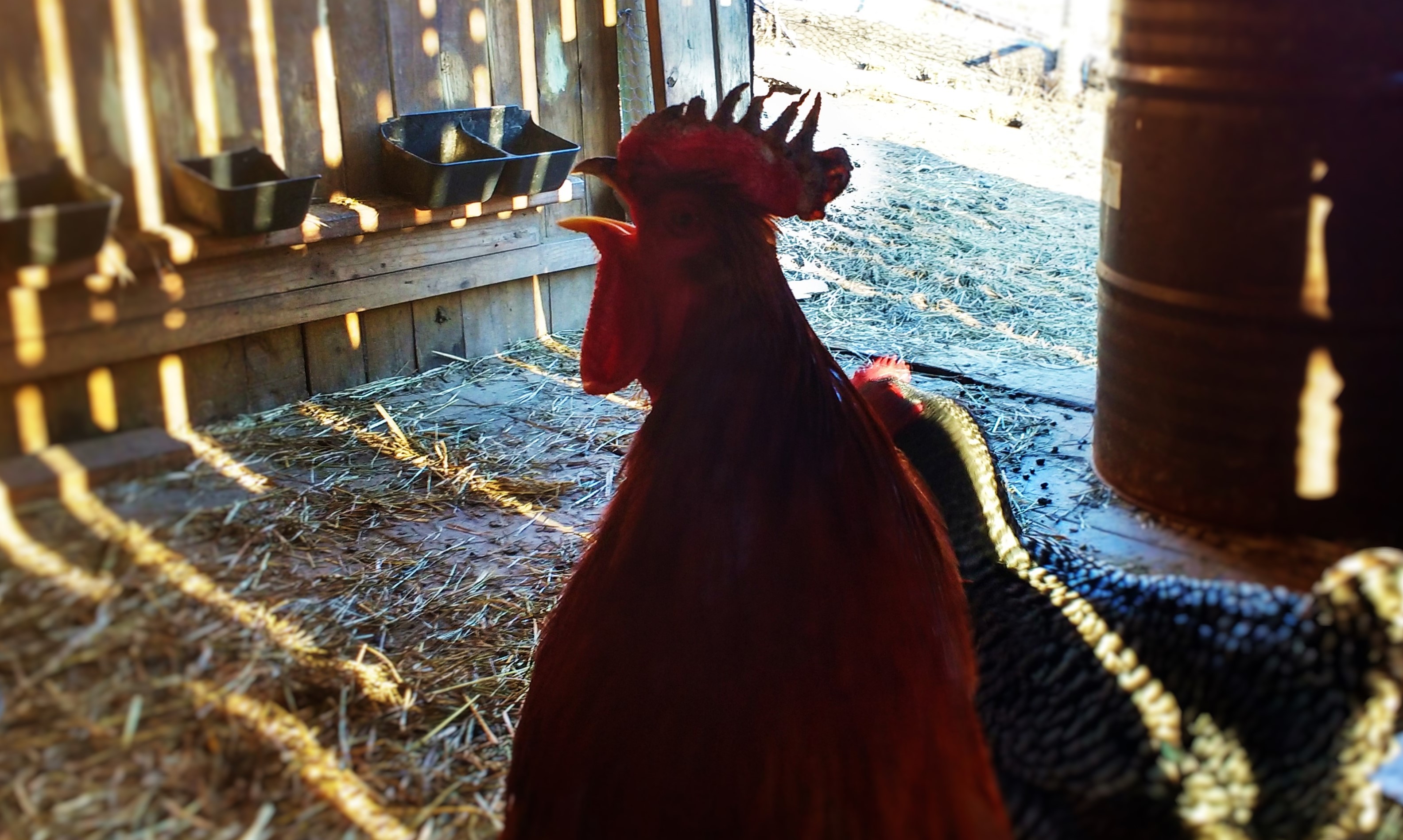
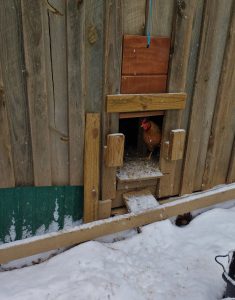
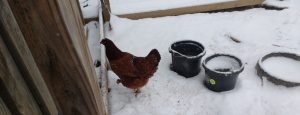
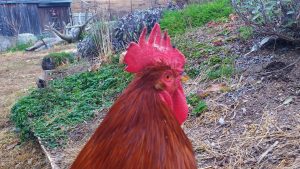
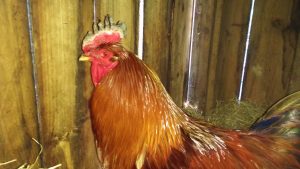








COMMENTS(7)
Poor stubborn guy. All my chickens refuse to sleep in their coop. I raised them there as chicks, but at some point they unionized and started roosting up high where it’s hard to get them. Good thing we’ve had relatively mild winters here the past few years.
Rasputin’s a tough sucker (thankfully). He finally lost a couple of his comb tips yesterday and he didn’t even complain! And the hens don’t seem to notice that he’s not quite as handsome as he used to be.
Trees are where chickens would naturally prefer to roost. Most of my chickens are breeds that are a bit to heavy to make it to my lowest tree branches. But I have a lightweight Lakenvelder who will sometimes get about 15 feet up in a tree at night. Like you, I just have to leave her there at that point. However, when it gets cold enough here, I always find her in the coop at night. So maybe if you ever do get a cold run, your flock will give the coop a try.
Thanks for reading and taking the time to comment! Tasha
Here in Northern Indiana we have below zero temps a lot! And being southeast of Lake Michigan we get lots of snow, average 88 inches. When we get snow, we snowblow a large area for the chickens to walk on. When there is a below 0 windchill, straw goes down in the cleared area, extra straw goes into the layer boxes and shredded paper goes on the floor. The heated dog waterbowls are plugged in and the petroleum jelly gets mixed with dried hot pepper, just a smidgen, to keep the comb and wattles warm.
It’s the first year my flock has experienced frostbite also. Min were in thir coops but one night got down to a feels like of -8 after a steady artic blast of many days h nights in a row. I had been told that using a heat lamp could easily overheat my chickens because they produce so much heat on their own. (I use a heat tape for their waterer.) I had no idea that they’d get this cold inside their coop or I would have shut their door. It was only the roosters comb & my ‘adopted’ hen of unknown breed that had more predominant comb. The gals with the tight & close combs all did fine. My hen was bleeding from her burns tho. So I brought her inside & carefully treated with some horn quit bleed powder that I had on hand. I made sure to protect her eyes. The scales have for most part shed off both birds now. Love my birds!
Hi Rhonda – This has been a rough year on a lot of chicken keepers. Where I live our winters are normally dry. But we had a lot more humidity in the air during our cold weather this year which made frostbite a bigger risk. I’ve never heard of horn quit bleed powder. I’ll have to check that out. I am glad your rooster and hen are on the mend. It sounds like you take great care of your flock. Thanks for sharing your story! Tasha
I am a feathery bird lover! Is there an angled shelter off of their coop so they can still go outside for freshness? It’s a shelter built from wood boards at an angle so the rain and snow stay out and is fenced from top and the sides. Then layer the ground with straw and dry leaves so that insects, spiders and snakes can seek shelter, and perhaps become yummy treats for your flock. Enjoy with love
Hey Teachercaryn -I totally agree! Lean-tos with natural floors are a great way to extend your coop area for bad weather. I have a door on the other side of my coop that leads to an area with a repurposed truck cap on posts so chickens have outdoor access even if it snows. That truck cap also keeps their dust bathing area dry even in the torrential rains becoming common in my North Carolina climate. I also dry whole Mammoth sunflower seed heads for my chickens in summer. Then, all winter long I and take it and a large pumpkin out for them to pick at as entertainment on bad weather days. It’s so much fun to watch them with their treats that it makes me feel better in bad weather too! Thanks for reading!